Building strong external obliques isn’t just for bodybuilders or fighters. Training rotational force helps athletes of all sports develop strength in an upright position.
For sports like baseball, discus, hammer, and shotput throwing, rotational training is a no-brainer, as it closely mimics the actions of competition. But postural strength is an important factor in all sports performance. Not only does a strong core protect our internal organs from injury, but it also allows us to maintain a stiff torso whilst being under external forces. This prevents the spine from moving in ways it’s not supposed to move. Just think of a football player getting tackled, or a strongman under a yoke.
A Three-Tiered Approach
Training rotational force strengthens anti-rotational properties, or our ability to stay facing forward and upright under external force. Using this training for anti-rotational purposes can be key to success even in events like sprinting, where minimising torso spin is critical to creating maximal downward force.
Rotational work often gets negative reviews because it can place a high amount of stress on the spine if done poorly. However, when done correctly in a way that allows for hip movement, it can be highly effective for sport performance and transfer of power.
I like to take a three-tiered approach:
- Rotational exercises: Working with trunk rotation
- Anti-rotational exercises: Not allowing rotation during the movement
- Offset exercises: Creating stress through imbalance.
Let’s have a look at a few fantastic exercises for each approach.
Rotational Exercises: 1. Russian Twist
This can be done either seated on the floor or using a decline bench. To increase the intensity on the lower abdominals, hold a dumbbell or weight plate in your hands, and rotate side to side under control. If you are seated on the floor, keep your feet elevated. However you do it, make sure to maintain good posture.
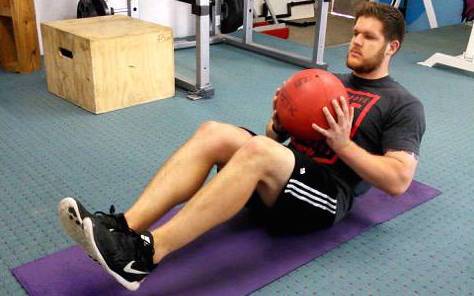
Rotational Exercises: 2. Medicine Ball Rotation Throw
Holding a medicine ball or slam ball, stand perpendicular to a solid wall (or you can throw to a partner). Throw the ball as hard as possible against the wall, rotating at the hips. You can also use the rebound (or throw back from your partner) to gain anti-rotational strength by absorbing the impact.
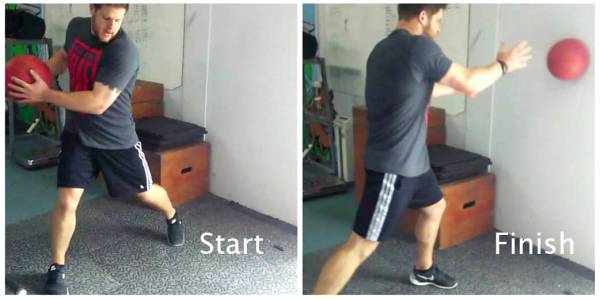
Rotational Exercises: 3. Woodchop
Can be done with a cable machine, resistance band, or even a weight plate. If using a cable or band, stand perpendicular to the fixture and turn at the torso, allowing hip rotation, then push away. Control the movement on the eccentric until complete.

Anti-Rotational Exercises: 1. Pallof Press
Using a cable machine or resistance band, start similarly to a woodchop, but hold the attachment at the torso. Maintaining upright posture, press the attachment away from your body until your arms are locked out in front of you, then return. This completes 1 rep. Ensure you maintain an upright posture throughout. Do not allow the resistance to turn your body.

Anti-Rotational Exercises: 2. Plank Variations
Hold yourself off the floor using your forearms and toes, creating a straight line from your shoulders down to your feet. Do not allow your hips to sag or lift too high. Create constant tension in the abdominals and glutes to maintain posture. Variations include side planks and changing the amount of points of contact with the floor (i.e. 2 feet + 1 hand, 2 hands + 1 foot etc.)

Anti-Rotational Exercises: 3. Rollouts
Using an ab wheel or loaded barbell (light to begin with), kneel on the floor and roll forward while maintaining a strong posture. Do not allow your hips to break the line by sagging or lifting. Continue forward until you feel you cannot hold position, then return to the start. To increase the intensity you can progress to starting on your toes.
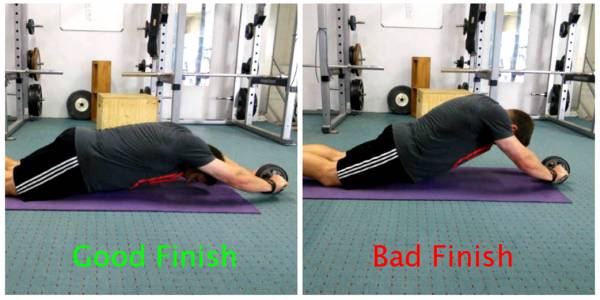
Offset Exercises: 1. Briefcase Carries
This is a one-handed farmer’s carry, so grab a heavy dumbbell, kettlebell, or farmer’s handle and walk for a set distance. The difficulty here is maintaining an upright posture under an uneven load. Focus on staying upright and creating tension through the mid-section.
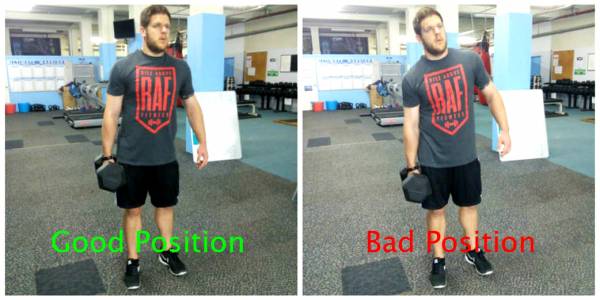
Offset Exercises: 2. Uneven Farmers Walks
Use farmers handles or dumbbells, but hold different weights in each hand. This places a higher stress on one side of the body, so it is important to create tension and maintain posture.
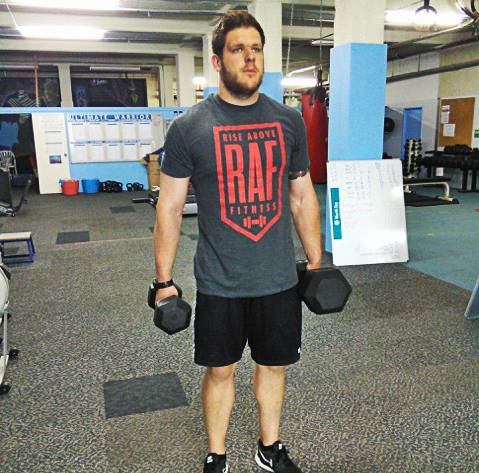
Offset Exercises: 3. Overhead Walks
Holding dumbbells, a loaded barbell, or a yoke frame above your head at lockout, walk forward for a set distance. The yoke frame will be the most difficult of these, as it will sway forward and back, challenging the integrity of your posture. It is essential to brace throughout and focus on maintaining correct form.
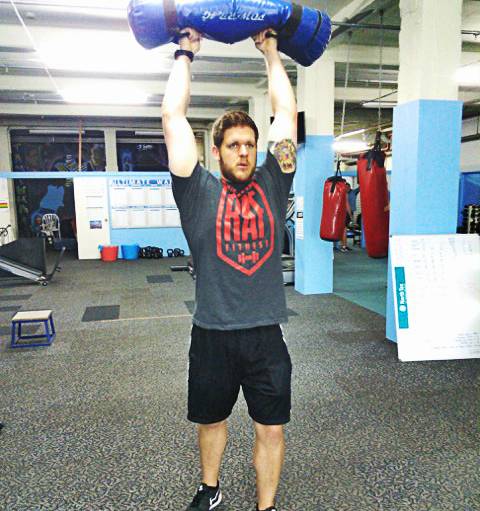
A 360-Degree View of Strength
There are many more exercises you could add, but I suggest starting with these and branching out from there. Focus on technique, and remember not to twist too far or too fast with the rotational work. When applicable, always turn the hips with the torso.
Hours upon hours of crunches are a thing of the past for athletes. Take a 360-degree view of strength by including rotational and anti-rotational exercise in your programming. You’ll get stronger and look pretty good – always a bonus, right?
More on Core Stability:
- Unleash Hellacious Power With the Tall Kneeling Unilateral Pull
- Spine Stabilization: How Your Core Should Be Working
- Do You Know What Your Core Really Is and What It Does?
- New on Breaking Muscle Today
Photo 1 courtesy of Shutterstock.
All other photos courtesy of Rob Nitman.






